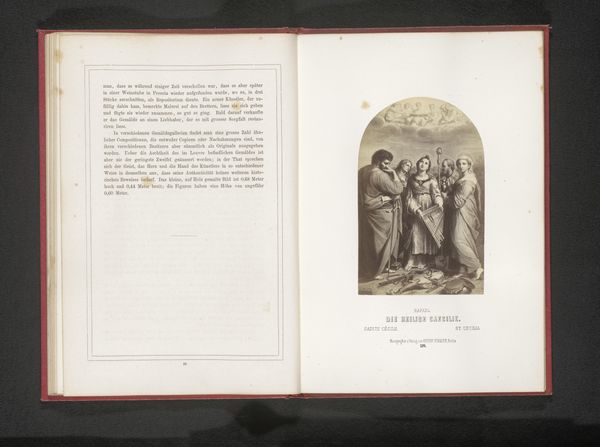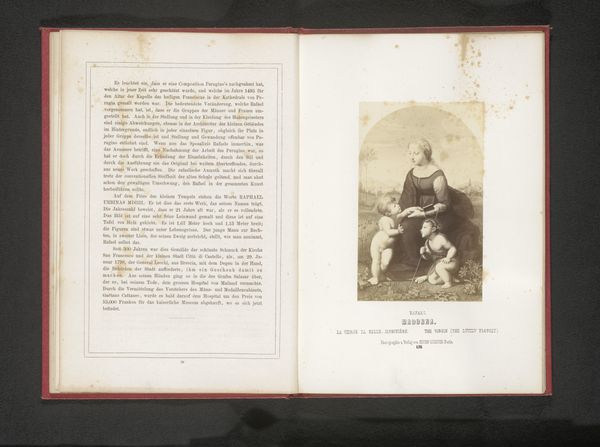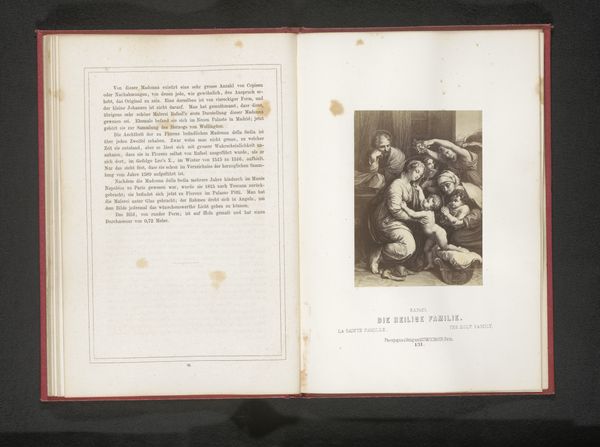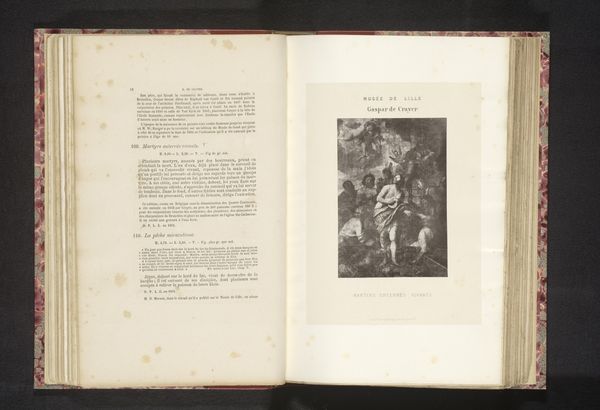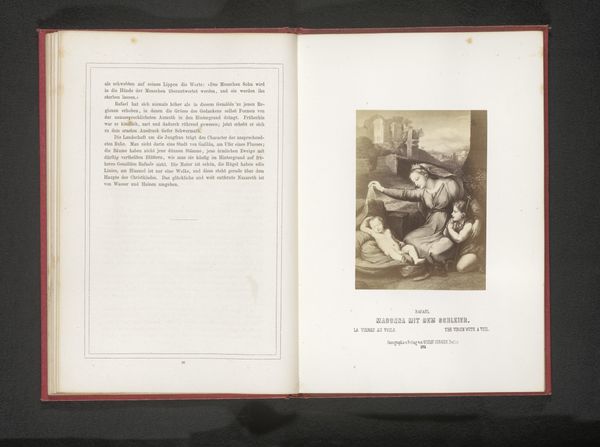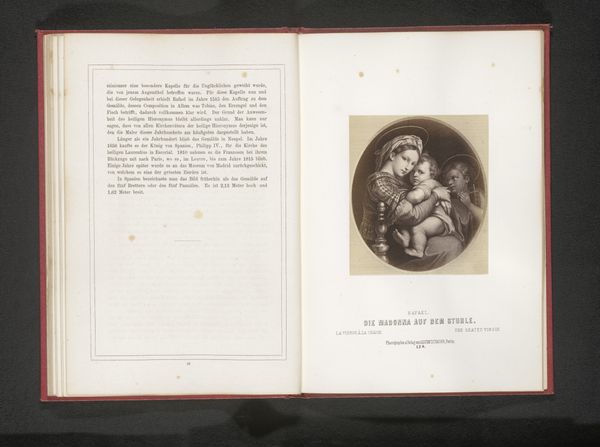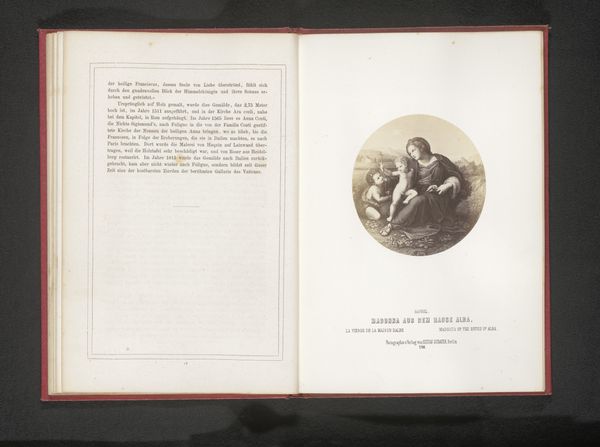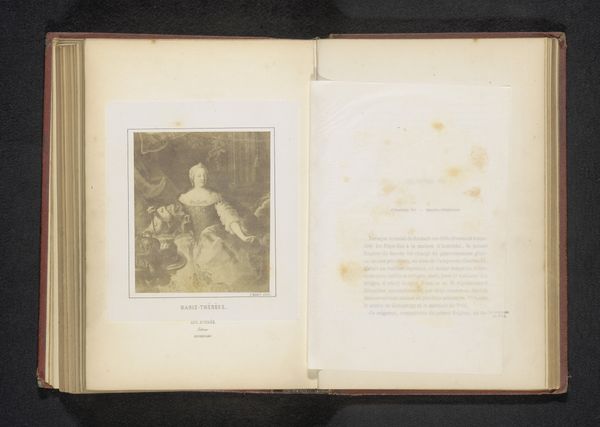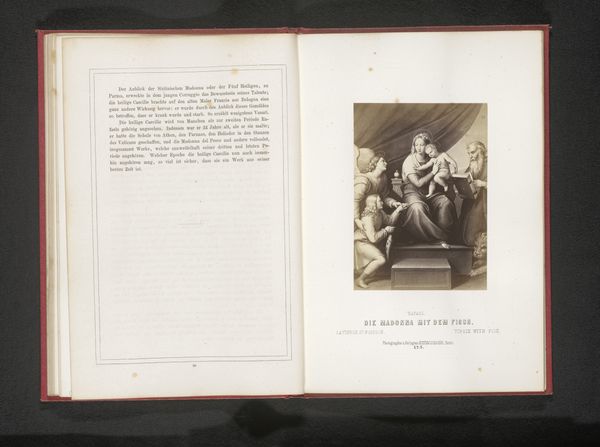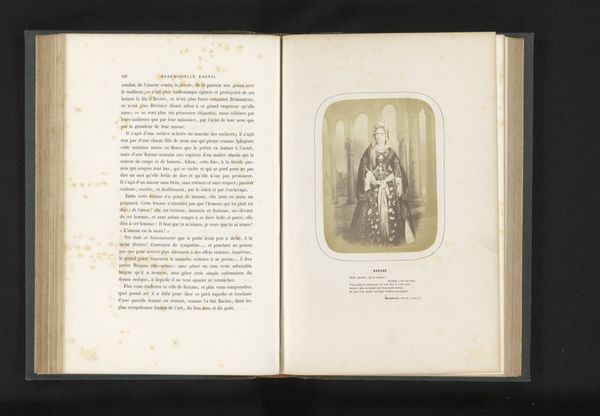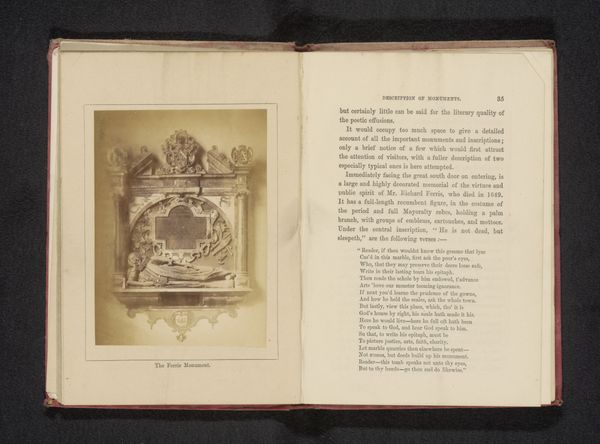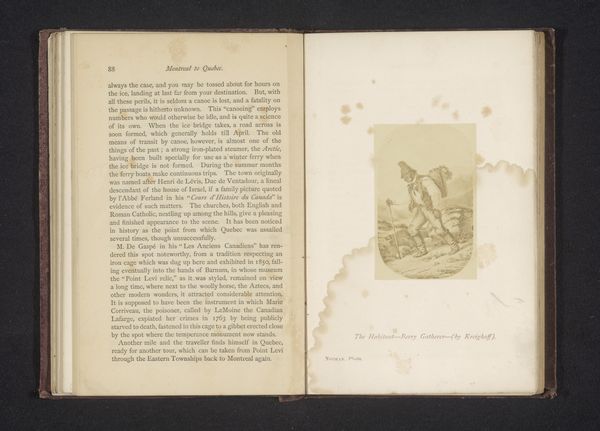
Fotoreproductie van een prent naar een schilderij, voorstellende de Madonna van Foligno before 1861
0:00
0:00
print, etching, paper, photography
#
aged paper
#
toned paper
#
muted colour palette
# print
#
etching
#
paper texture
#
paper
#
photography
#
history-painting
#
italian-renaissance
#
historical font
Dimensions: height 134 mm, width 82 mm
Copyright: Rijks Museum: Open Domain
Editor: So, this is a photogravure of a print of Raphael's "Madonna of Foligno," created sometime before 1861 by Gustav Schauer. It’s interesting how the printmaking gives the scene a very ethereal, almost dreamlike quality. What strikes you most when you look at it? Curator: It's compelling how a photographic reproduction flattens the original painting and disseminates the image, and, therefore, the ideal, into new contexts and class structures. The muted colors and the aged paper become critical in understanding 19th-century engagements with the Renaissance. To whom did access to these idealized forms matter? Editor: That’s interesting, this widespread access. But what would people *do* with this image? Curator: Consider the rise of nationalism during this period and how images like this, originally symbols of religious authority, could be repurposed to cultivate a sense of cultural heritage. Notice how it takes the very religious scene, strips most of its original spiritual intent, and democratizes access for personal, social or even national purposes. Does the "Madonna" retain her cultural power, or has she now lost it to political movements? Editor: So, it's not just about seeing the art, but about how that art is used and how its meaning shifts over time and informs movements? Curator: Exactly. This print isn't simply a reproduction, it's a document of cultural appropriation and reinterpretation, a visual argument in a much larger conversation about identity and power. And that changes its political weight, I’d argue. Editor: I hadn't considered how much the print’s purpose could have shifted over time. Now I see so much more. Thanks! Curator: Indeed. It highlights how vital it is to critically examine not just what we see, but why and for whom it was made accessible.
Comments
No comments
Be the first to comment and join the conversation on the ultimate creative platform.
